- Pontoon Boats
- Personal Watercraft
- nauticalknowhow
- Nautical Knots
- Tools and Calculators

How to Make a Boat Cover
You should never underestimate the importance of a boat cover. A good boat cover will protect your boat from dirt and debris. Not to mention wear and tear from the sun and the rain. And of course it can protect from dings and scrapes as well. Not every cover needs to be a custom boat cover.
The problem is that many boats are oddly sized and shaped. There’s no real quality boat cover you can buy on the cheap to cover your boat. There are generic box covers you can buy at stores like Walmart. Walmart boat covers are not very high-quality, however. If you want a boat cover built to last, it’s not the best place to go. The boat covers Walmart offers are cheap for a reason.
If you head to a canvas shop to get one made for you, the price could cause you to do a double-take. On the low end of the scale you can expect to pay about $60 an hour for custom canvas boat covers. It’s also going to take about 9 hours’ worth of work at the minimum. That’s a $540 custom boat cover. At the high end of the scale you could be looking at over $1,300 for a mooring cover for a 24 foot Ski boat.
Why You Need to Make a Boat Cover
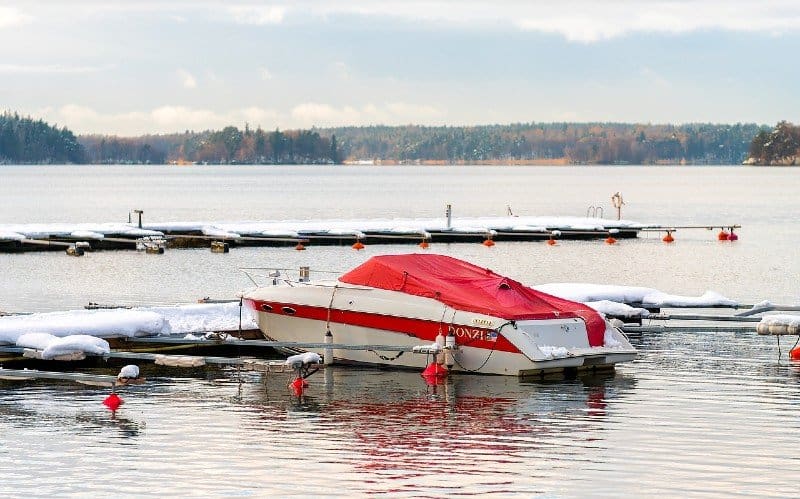
A boat cover is more than just an accessory. It’s a way of protecting your investment. Considering how much money a boat costs, you should want to do whatever you can to keep it in the best shape possible. When properly fitted, a boat cover does just that. Not every boater is convinced a boat cover is necessary. But take a look at exactly what a good quality boat cover can do.
- Protects against dust, dirt, and debris
- Prevents fading and damage from the sun’s harmful rays
- Keeps water and moisture away from your boat
- Prevents mold from forming
- Can keep animals from getting into your boat, and especially birds for making a mess on your boat
- It can also act as security for your boat by discouraging would-be vandals or thieves
The key to all of this is a well-fitted boat cover. Using any old boat cover won’t do. That’s why making your own boat cover to fit your boat specifically is one of the best things you can do.
How to Make Your Own Boat Cover

Making your own boat cover won’t just save you a lot of money. It will also ensure a perfect fit if it’s done the right way. The steps to make your own cover that are not as hard as you might think.
Measure the Boat: The first step towards making any decent boat cover is to know the exact size of your boat. Start by measuring the stern at its highest point. That could be the stern itself, or along any rails you may have. Write down the measurements on a rough sketch of your boat so that you’ll be able to refer to it later.
You can now move on to the windshield and measure the width and the height of its peak to the rub rail. After that measure the widest part of the bow and include the height of the rub rail if you have a railing there.
Get a full measurement from the bow rail to the stern rail. Make sure to cover every high point like railings, the windshield, and anything else. This ensures you’ll get a precise end to end measurement.
Double check all your measurements, just in case. When you record them remember that you don’t want a boat cover that fits too tight. Nor do you want a boat cover that’s too loose.
Buy Your Material: When most people talk about boat covers they use the word canvas. When you’re doing work making it, that’s called canvas work. In this instance, canvas doesn’t necessarily mean what you think. It doesn’t have to be that thick material that is literally canvas. Any kind of fabric or material can get the job done here if it’s light enough and strong enough.
One of the best places to get material for making a boat cover is from Sunbrella. Sunbrella sells a wide range of their own boat covers and bimini top. But they also supply the raw material that you can use to make your own boat cover.
Depending on your supplier, you could get Sunbrella acrylic fabric for around $24 per yard . This fabric is some of the best in the industry. It resists mold, water, and mildew. It also resists UV rays and it won’t stretch or shrink.
In order to sew your fabric, you need a special thread. This isn’t the kind of stuff you find at the local craft store. Use something called a V-69 polyester sailmaker thread. It’s high strength and it will not degrade in sunlight. It resists saltwater, mildew, and rough wear and tear. A 1,300 yard spool of it will cost you $13 .
A number 18 needle is recommended for sewing any three ounce to six ounce fabric. That includes the fabric that Sunbrella sells. You can get a pack of them pretty cheaply on Amazon. You want to make sure you have a number of spares because odds are you’ll break a few in your sewing machine.
If you’ve ever seen any professional tailors work, then you’ll know you need chalk. White chalk is good for marking fabric without permanently damaging it. Also, a solid pair of scissors to cut fabric will be very important. You may also want to pick up a stitch ripper to help fix any mistakes. Also, something called basting tape. Basting tape is a double-sided tape specifically used for canvas. It will allow you to precisely lineup and affix your fabric before sewing. This greatly cuts back on mistakes.

Cut Your Fabric: Now that you have everything you need and you can cut your fabric to size. Remember that you’re going to need some extra to stretch the cover around the sides of the boat. You also need room for ties to keep it tightly fit. Cut your panels to fit across the widest segments of the boat.
Stitch Your Panels: Overlap the fabric panels so they have about a 5/8 of an inch seam. Lay all the panels over your boat with this overlapping seam to ensure they fit. If the size and fit works out, you can use the basting tape to hold the seams where you’ve laid them out. At this point, you can use your sewing machine and stitch the fabric panels together.
Once you have the basic shape stitched together, place the stitched cover over the boat. Use your chalk to mark where you need to trim the edges down. Use your shears to cut it down to a reasonable size all the way around.
Set up Your Draw Cord: You should have left enough material around the edges to hem the edge. This will allow you to run a rope or draw cord around your cover.You’ll need to cut holes to allow the rope to come out. You should secure it with some large grommets. Alternately, you can fold the edges of the holes back and sew them to create a drawstring pocket.
Insert the Ropes: Make sure you have chosen a good quality, water resistant rope. Run it through the holes and leave a reasonable length for a drawstring at the end.
Cover the Boat: Now that everything is the right size and shape, send it over in the boat. If anything needs adjusting, now’s the time to do it.
Test the Ropes: At this point you can check to make sure you have enough rope so that you can pass it under your boat. kite securely to make sure it’s the way you want it to be. If everything looks good, you just made and secured your own boat cover.
Things to Remember
As you can see, the process of making a cover is not that hard. If you can use a sewing machine and measure materials, you can make a cover. The cost in materials versus what you have to pay for a custom cover is quite dramatic. You may have to hone your sewing skills first if you’re not comfortable sewing heavy material. Make sure you try a few scraps panels ahead of time to get the hang of it. Don’t panic if you break a needle, as it’s probably going to happen a few times.
My grandfather first took me fishing when I was too young to actually hold up a rod on my own. As an avid camper, hiker, and nature enthusiast I'm always looking for a new adventure.
Categories : nauticalknowhow
Urban Faria on September 6, 2020
Very, very interesting to me as I want to start a boat covering/canopy/cushion hobby as a retirement pastime.
Leave a Reply Cancel reply
Your email address will not be published. Required fields are marked *
Save my name, email, and website in this browser for the next time I comment.
More in nauticalknowhow

How to Tie a Boat to a Dock

How to Clean a Boat Cover

Everything You Need to Know About Your Boat’s Bilge Pump

4 Ways to Tie Your Boat Shoes

The People’s Poncho Review and Ratings

Oru Lake Kayak Review

What Is A Gunwale?

131 of the Best Hawaiian Boat Names

167 Patriotic Boat Names
About boatsafe.
Established in 1998, BoatSafe is your independent guide into the world of boating, fishing, and watersports. We provide expert insights and detailed guides to help you find products tailored to your needs and budget.
Contact Boatsafe
- Address: 4021 West Walnut Street. Rogers, AR 72756
- Phone: (479)339-4795
- Email: [email protected]
Site Navigation
- How We Test
- Corrections Policy
- Privacy Policy
- Terms & Conditions
- Editorial Policy
- Affiliate Disclosure
Our Reviews

All content is © Copyright 2024. All rights reserved.
25 Homemade Boat Cover Ideas You Can DIY Easily
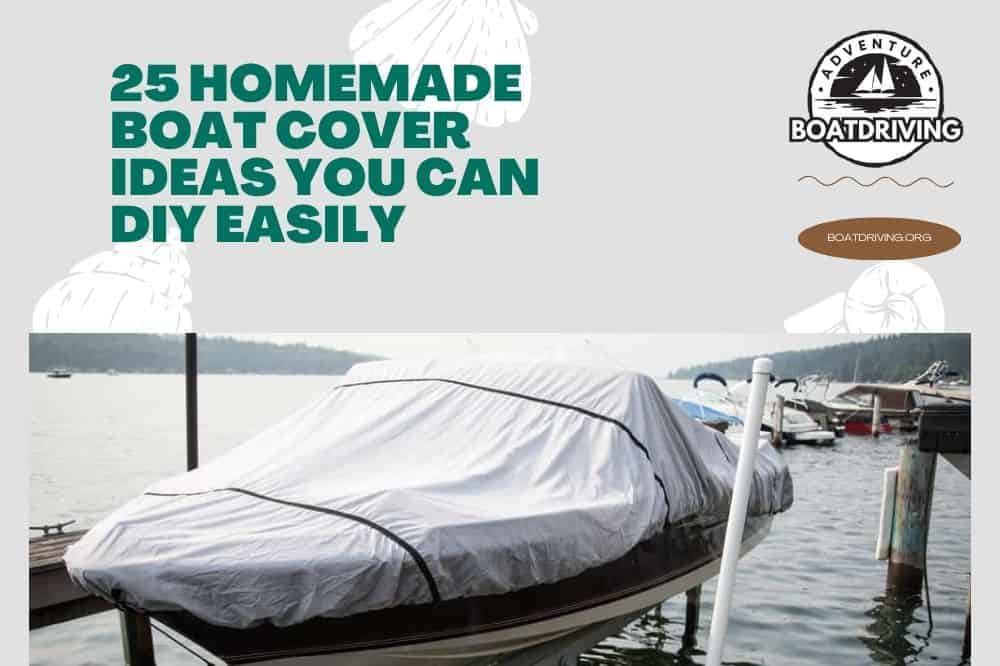
Boats are expensive, so it’s worth the effort of making sure yours is properly protected when you’re not using it, but unfortunately, even the covers themselves don’t come cheap. However, there is a solution that will save you some money, and that’s to make your own.
For anyone who wants to have a go, we’ve scoured the internet to see what other people have been trying – and as a result, here’s a selection of the best DIY boat cover plans you’ll be able to copy yourself.
Table of Contents
1. How to Make a Boat Cover – Boatsafe.com
2. how to make a power boat cover, 3. do-it-yourself: fashioning canvas covers for your boat – passagemaker, 4. best diy boat cover support system, 5. making a new boat cover for my skerry – christinedemerchant.com, 6. boat cover diy, 7. how to make a powerboat cover – sailrite, 8. how to make sunbrella dinghy cover to protect pvc from sun uv, 9. how to make a boat cover – doityourself.com, 10. easy cheap boat cover support frame diy, 11. homemade boat cover support system – ourrecipesforsuccess.com, 12. diy boat cover, 13. make a canvas sailboat cover – i made it at techshop: 7 steps – instructables, 14. how to fix a boat cover that gets filled with water, 15. diy: small boat cover frame – bound to journal, 16. how to build a tarp frame for a boat, 17. diy canvas repair tips – boating magazine, 18. how to make a trailerable boat cover, 19. how to make a homemade pontoon boat cover support system, 20. cheap and easy boat cover frame – how to diy, 21. diy tarpaulin for your yacht: a low-cost alternative, 22. make your own winter boat cover, 23. secret tarp hacks, 24. our diy boat cover – adventures on the club, 25. diy retractable boat cover, plenty of great options for diy boat covers.
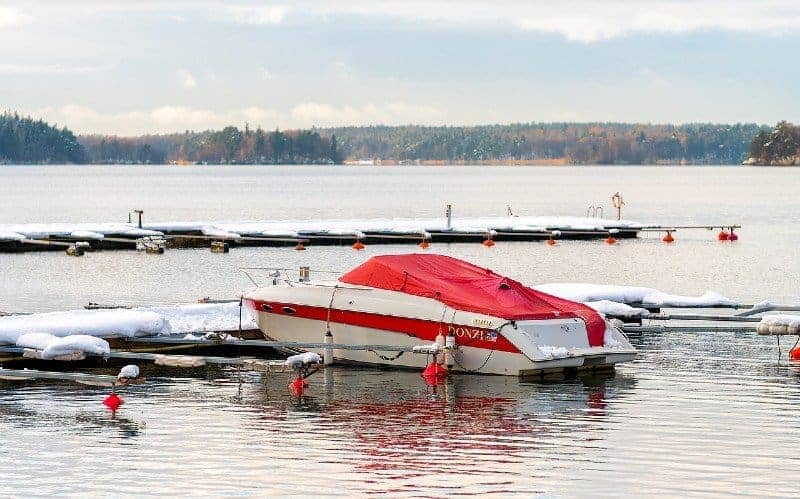
As this post explains, providing your boat with a good-quality cover is important for protecting it, but since boats come in all shapes and sizes, it can be hard to find the right one for a reasonable price. The alternative is to make one yourself, and this blog post tells you all about how to do it, with details on the materials you’ll need as well as a step-by-step guide to completing the project. A well-written post and well worth a look.
Check More Details
The written introduction to this video tutorial tells you it will teach you how to make a custom cover for your powerboat, and if that’s what you need, it’s recommended watching. At well over an hour, it’s a long video, but that means it goes into plenty of detail to help ensure your project is successful and the cover you make is a perfect fit for your boat.
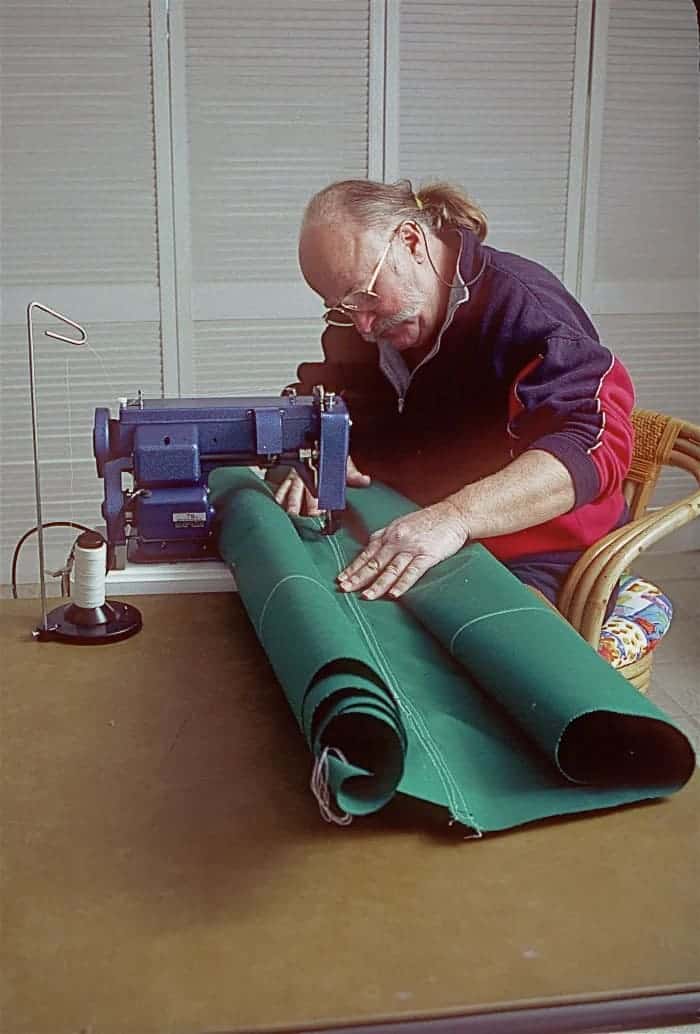
Sewing is a handy skill for any seafarer to be acquainted with – for example, you never know when you might need to make running repairs to your sails while on the ocean. However, even on dry land, those skills can be put to use if you want to make your own DIY cover to keep your boat safe. It’s not such a difficult job, and with the right equipment and a bit of determination, anyone can do it – and this blog post will teach you how.
If you want a cover for your boat, you may also need a support system to hold it in place. That’s what this tutorial is about because in it, this YouTuber shows us how he built a frame to hold the cover for his Jon boat . The frame is made of PVC pipes, and the tarp itself cost only $20 – so as you can imagine, the whole setup was extremely inexpensive. And if you want something similar, it should be easy enough to copy his plan at home.
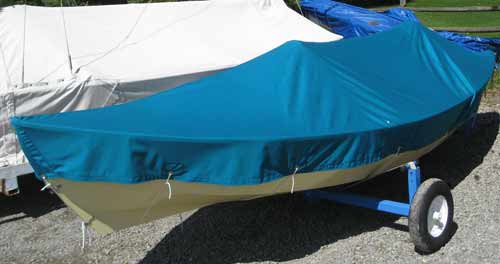
In this post, this blogger tells us about how he designed and made a new cover for his skerry. As he explains, his previous tarps only lasted around two seasons each, and this time, he wanted something a bit more durable. He gives us a clear description of what he did and also provides plenty of photos, so if you need something like this, why not have a go at making one yourself?
This video gives you a basic method for making a cover for your boat using just a simple tarp. If you only have a small boat and don’t need elaborate solutions, sometimes it’s best not to overcomplicate things – and if that sounds like the kind of project you want to try, this is the video for you.
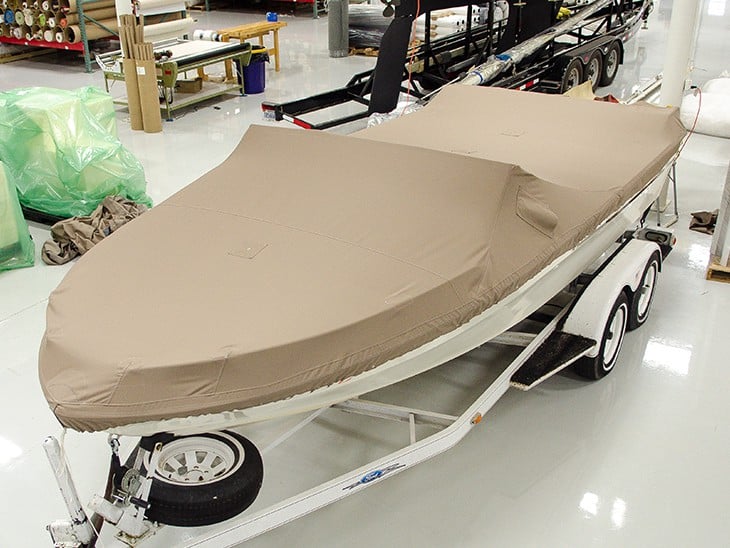
The homemade cover protecting the powerboat in the photo looks highly professional, and as the post promises, you’ll also find plenty of helpful tips, techniques and step-by-step instructions for making a snug version just like it for your boat. It even includes a video showing how to do it, making this a great resource for anyone interesting in making a DIY boat cover.
In this video, you’ll learn how to make a cover to protect a dingy from UV damage. Dinghies are not usually made of particularly UV-resistant material, so it’s important to cover them up. Buying a cover can cost around $800, but with this plan, you can make one for much less, saving you a whole lot of cash.

There are several benefits of making a cover for your boat rather than buying one, as this blog points out. You can save money, and importantly, one you make yourself will probably be a much better fit for your boat. It’s also not that difficult to do, and this post takes you through how to complete the job in just eight simple steps.
Like #4, this video tutorial shows you how to build a cover frame that will help keep rainwater out of your Jon boat . It’s another simple and inexpensive design based on PVC piping, offering an easy and affordable way to protect your boat from the elements.
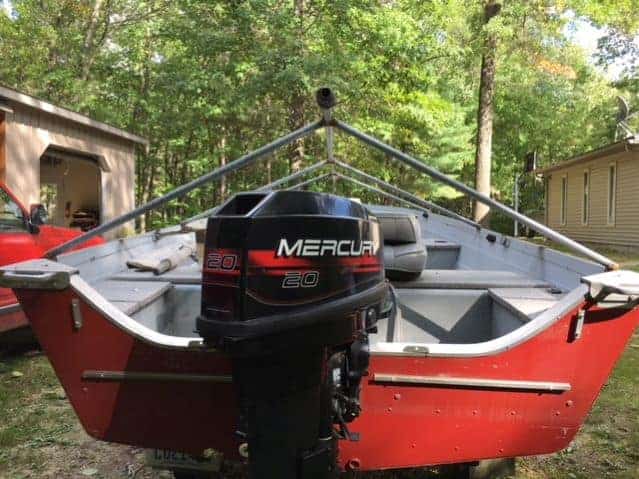
This is another plan for a boat cover support, but this one is for something a little more substantial since the frame is made of metal. That means there’s a little bit of welding involved, but if that doesn’t put you off, it’s an easy enough job – so why not see if you can replicate it at home?
Here we learn about a simple technique for fitting a tarp to a duck-hunting boat. As this YouTuber explains, just covering his boat with a tarp would result in a sag in the middle where water would collect. His solution was to rig up a DIY frame to create a ridge – and his idea worked perfectly. Check out his video and see what you think.
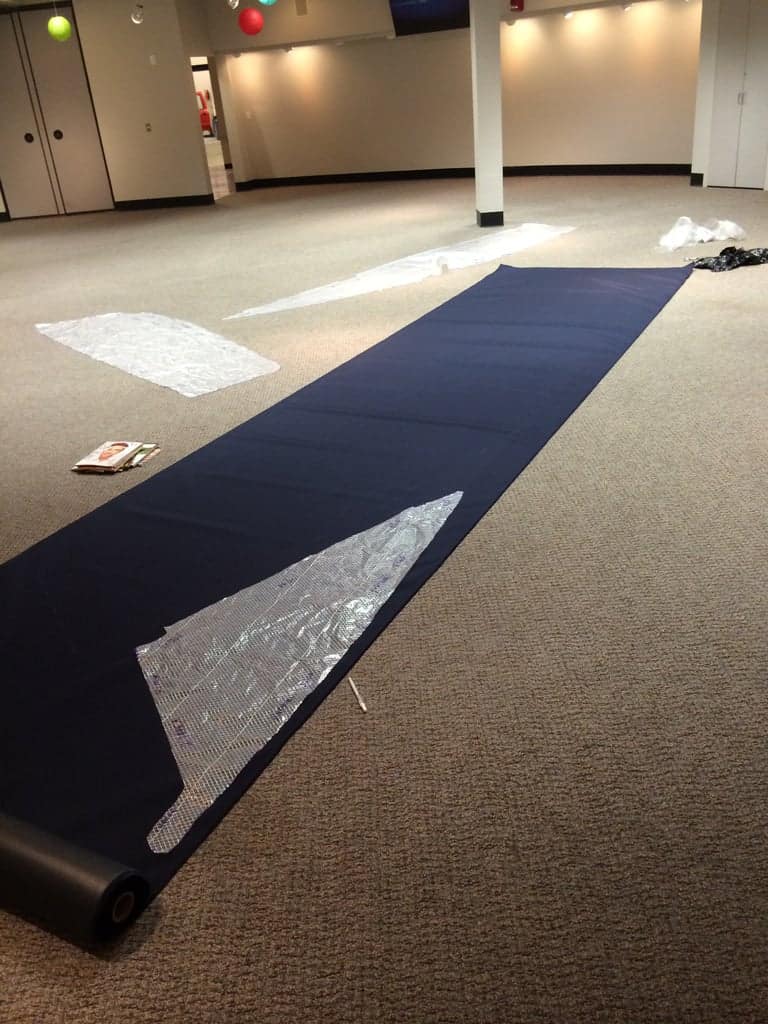
Making a DIY cover for a sailboat is among the more challenging types to attempt, but with the right plan, it’s far from impossible. This tutorial takes you through how to do it in a clear and logical order, and it also provides you with plenty of photos for reference. Plans from this site are always high quality, and this is another one that doesn’t disappoint.
For anyone fed up with water pooling on their boat cover when it rains, this is a useful video to watch – because in it, you’ll find out about a super-simple but highly efficient solution to your problem. Sometimes the simplest ideas are best, and this video is the proof. Great job, we enjoyed this one!
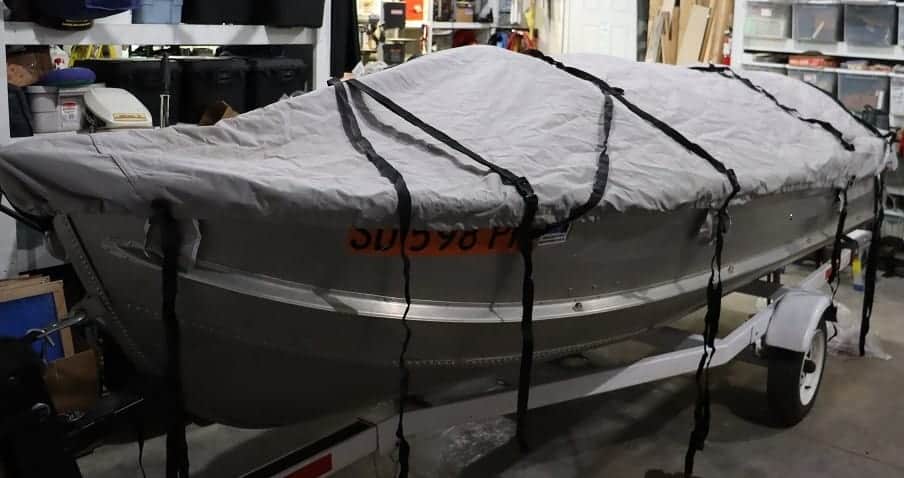
This blog recounts a common problem that many boat owners probably recognize – namely, water pooling inside the boat after snow or rain due to the cover sagging. The simple solution is to build a frame that allows the water to run off over the side – and the included video teaches you how to make one.
The YouTuber in this video seems to have quite the dry sense of humor, but he also has lots of great ideas about how to build a frame for your boat cover . So if you want to find out how to do it – and you don’t mind a joke or two along the way – this is a video you should enjoy.
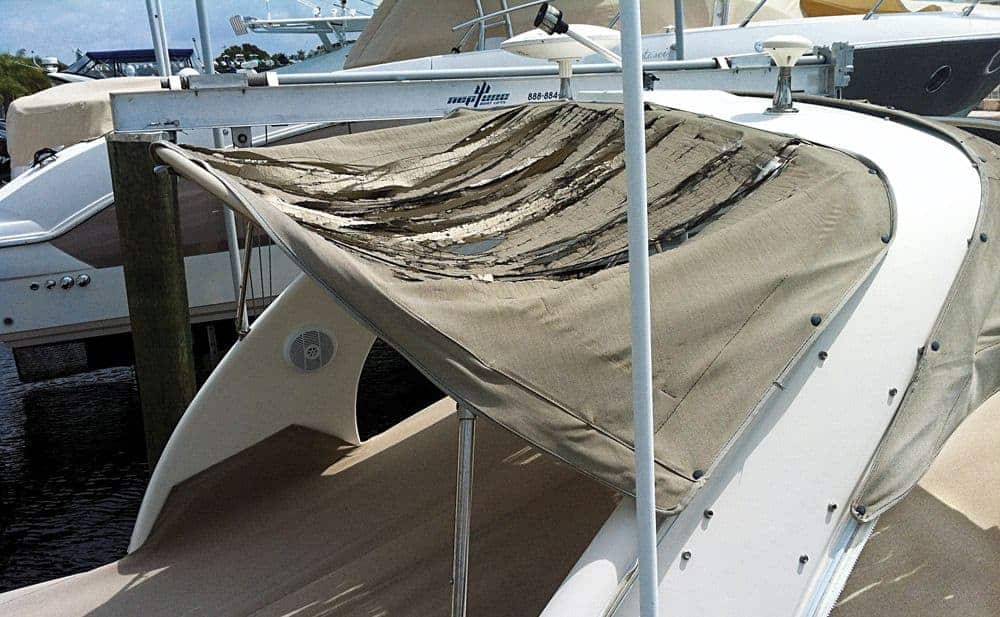
If you already have an old boat canvas and don’t want to spend the money on buying a new one, you can DIY one – or you can DIY-repair the one you already have. The second option can save you both time and money and can also allow you to put off buying a new one for at least couple of years. Sound like something you might be interested in trying? Then give this post a read!
This is a long and detailed video from the same people who made #2, and just like that offering, it’s a high-quality tutorial. This one teaches you how to make a trailerable boat cover, and if that’s what you need, there are few better videos online for you to watch.
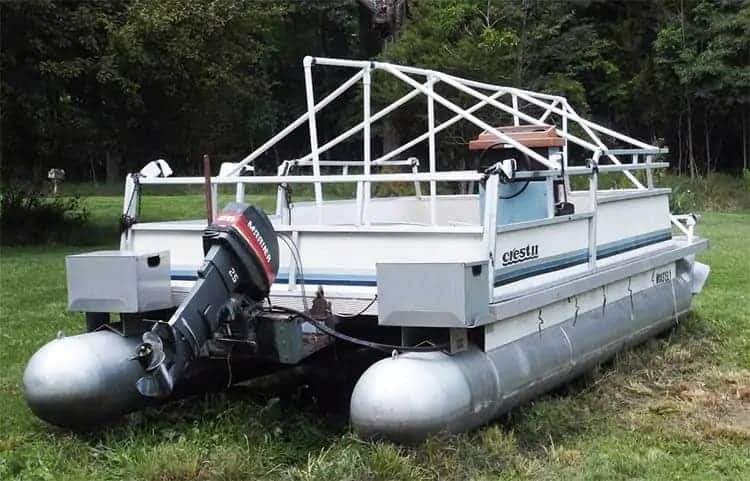
This is another plan that teaches you how to make a boat cover frame, this time for a pontoon boat . As the blogger explains, there’s nothing more frustrating than coming back to your boat and finding it full of water or even critters – and this plan will show you how to prevent that from happening.
The cover frame this video teaches you how to make is intended for bass boats , but as we are told, it would be easy to modify the design to fit other types of boat too. It’s an easy and cheap method that anyone can copy, and it works perfectly too – so what are you waiting for?
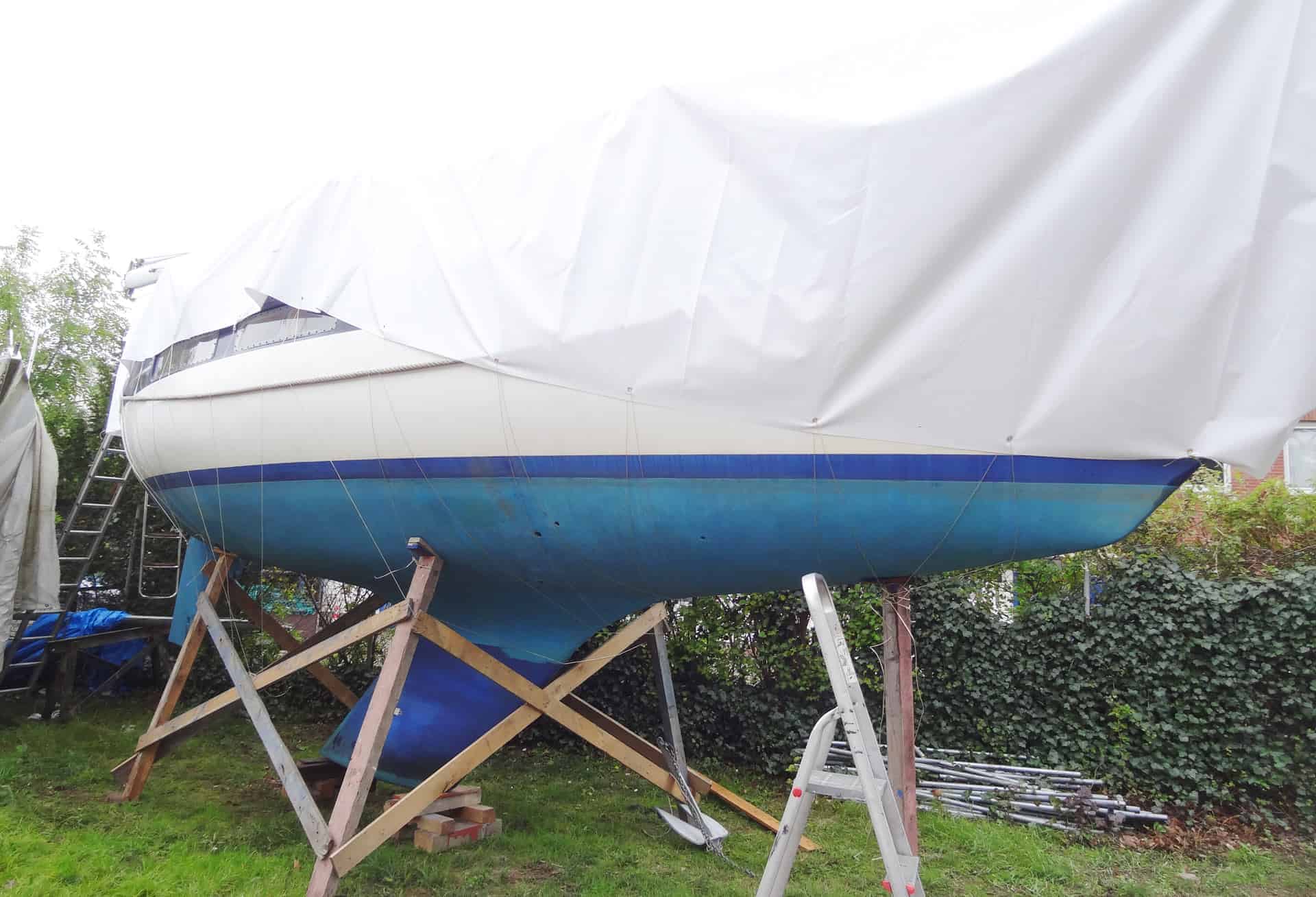
When it comes to storing your yacht through the winter, there are lots of factors to consider, but in almost all cases, you’ll need a reliable tarp to protect it. This blog post talks in detail about the best options for boat storage available to you and tells you how and why this blogger decided to make a DIY version – so if you’re facing similar decisions, it’s well worth checking out.
Here’s one more video from the same people who made the videos in #2 and #18 – and just like those tutorials, this one is long and full of invaluable information. This upload is about making a winter boat cover, and if that’s what you’re interested in, you’d do well to watch this video all the way through.
This video is another one from the YouTuber who gave us #16, and in this video, he shares all the tips and tricks about tarping boats that he’s accumulated through years of experience. That means it doesn’t give you a specific plan to follow, but it does give you plenty of useful info – which makes it worth a look before you start planning how to make a DIY tarp or boat cover of your own.
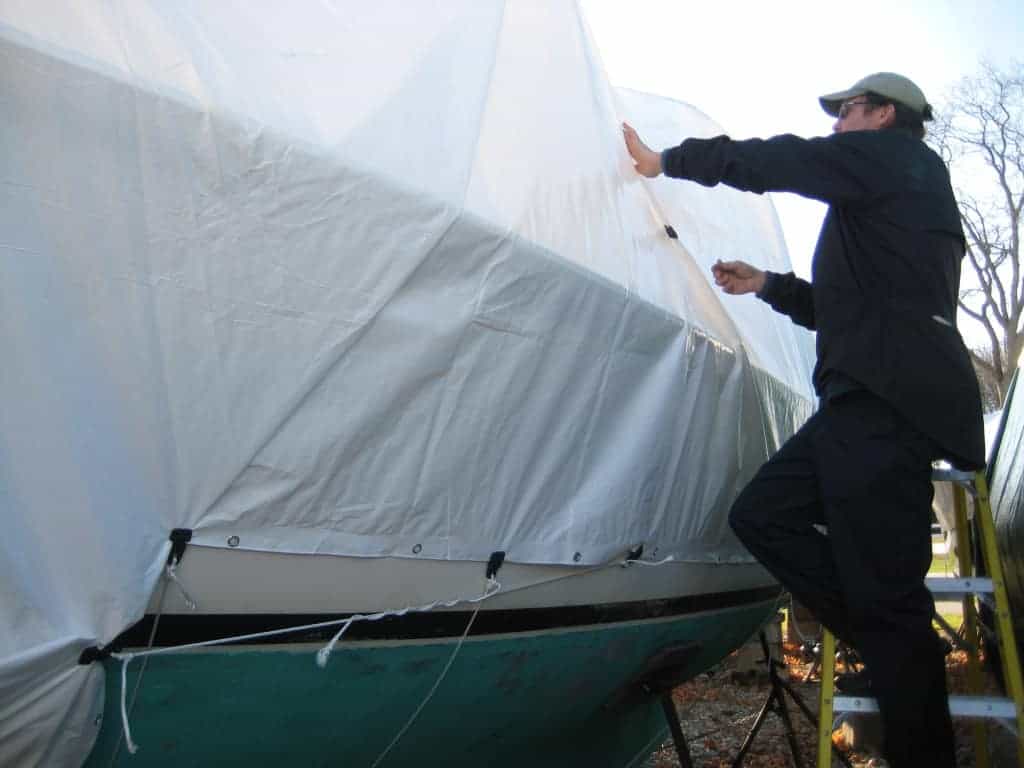
The retractable cover this YouTuber made for his dive boat cost only around $125, making it an effective yet affordable solution to the problem of protecting his vessel. As he explains, without the cover, his boat was constantly being filled with pollen, pine needles and a whole lot more, but by utilizing the trees around where he stored the boat, he was able to rig up a DIY solution. It works perfectly too, so check it out if you think you might want to copy some of his ideas.
As you can see, whichever type of vessel you own, there are plenty of great plans for making a DIY boat cover that will help keep your boat protected and safe while also saving you a bit of money.
We’ve enjoyed collecting these plans for you, so we hope you’ve enjoyed watching and reading them too. And above all, we hope we’ve helped you find the ideas you needed to get started on a DIY boat cover of your own.
Related posts:
- 18 Homemade Wood Boat Plans You Can DIY Easily
- 18 Homemade Boat Trailer Plans You Can DIY Easily
- 17 Homemade Boat Lift Plans You Can DIY Easily
- 17 Homemade Boat Motors Plans You Can DIY Easily
3 thoughts on “25 Homemade Boat Cover Ideas You Can DIY Easily”
The bottom of my 2000 Logic is coming apart at the bottom of the transom. I heard there was an issue with this. What are mr recourses ?
Budget is another consideration and the good thing is that I’ll find an affordable and effective one. Mypontoon still needs protection even if it’s in storage.
thanks for the useful information. pontoon boat covers to protect it from the harmful rays of the sun which contain UV rays. budget and quality of cover are very important
Leave a Comment Cancel reply
Save my name, email, and website in this browser for the next time I comment.

The $tingy Sailor
Diy trailerable sailboat restoration and improvement without throwing your budget overboard.

How to Make a Mainsail Cover
Summer Dance didn’t have much in the way of canvaswork when we bought her: an original mainsail cover and an old outboard engine cover that also looked pretty ghetto. Besides being 1980’s brown in color, the canvas of the mainsail cover was faded and shredded in places, much of the stitching had disintegrated, and the zipper had come almost completely loose. It was unsalvageable but it did work as a pattern to sew a new cover out of Sunbrella , the gold standard of marine canvas.

The mainsail cover was my very first canvas sewing project. I used it to get the feel of working with canvas and to practice sewing with our standard New Home sewing machine. If you already have a home sewing machine, it will probably work okay for up to several layers of canvas, depending on the thickness. Four yards of canvas was more than enough for me to make a 10′ mainsail cover and a new outboard engine cover with remnants left over for smaller projects. I ordered the canvas from SailRite along with the V-92 White UV Bonded Polyester Thread , YKK #10 White Separating Molded Tooth Zipper , hook and loop fastener tape around the mast, and twist fasteners for under the boom.
I took the old cover apart at the seams, laid out the parts on the new canvas, and traced around them with a soapstone pencil , also from SailRite. I cut the parts out with scissors but later, when I made the cabin cushion covers , I discovered how much better a hotknife works for cutting synthetic marine canvas like Sunbrella. Instead of the edges unravelling, they fuse solid. That not only makes them easier to work with and prevents getting pieces of thread everywhere, it also ensures that they won’t come loose after years of use and abuse. Rather than buy an expensive industrial hotknife , I made my own hotknife solution .
The rest of this project was simply sewing it together in the same way as the old cover and installing the twist fasteners and the end tie. SailRite has plenty of how-to videos on all of the necessary steps including a video on making a mainsail cover from start to finish using one of their kits . If you don’t have an old cover to use as a pattern, I recommend a kit. I purchased one for a foredeck sail bag .
The only other thing you will need is practice at making long, straight, consistent seams and sewing around corners through numerous layers of canvas. A magnetic sewing guide really helps out. Rather than buy one, I made my own out of a scrap of hardwood and a couple of rare earth magnets. I also highly recommend using Seamstick to hold the pieces together as you sew. It helps a lot too.
The mainsail cover project only took a leisurely evening to make and it turned out great. It’s tough, too. Mine was put to an extreme test during the freak storm that heavily damaged Summer Dance . The mainsail cover came through with no significant damage and it protected our mainsail from certain destruction.
Gentlemen, start your sewing machines!
Give making your own canvas gear a try. And for the guys out there, don’t fall for the stereotype excuse that men don’t sew. Plenty of sailmakers are men and they perfected their chops on projects like this. When you juice it down, it’s about plans, materials, fasteners, and power tools; all things that DIY guys (and gals) like. Even if you’re all thumbs when it comes to pointy needles, this is a project that you can do together with your first mate or a friendly seamstress.
If you’re like me, you’ll be surprised at how easy it is and go on to make other projects like an outboard engine cover, cabin cushion covers , crib board storage bag , lifeline cushions , foredeck sail bag , bimini cover , tiller cover, winch covers , and more. For some truly ingenious canvaswork ideas, check out Don Casey’s 100 Fast and Easy Boat Improvements .

If you like this project, then you’ll really like my ebook Do-It-Yourself Small Sailboat Canvaswork . It contains a dimensioned drawing for this project and eight more canvaswork projects as well, all for only $20 USD. Click the picture at right to order your copy for immediate download and get started today!
Would you like to be notified when I publish more posts like this? Enter your email address below to subscribe to this blog and receive notifications of new posts by email. You will also receive occasional newsletters with exclusive info and deals only for subscribers and the password to the Downloads page. It’s free and you can unsubscribe at any time but almost nobody does!
Subscribe to Blog via Email
Enter your email address to subscribe to this blog and receive notifications of new posts by email.
Email Address:
Share this:
3 thoughts on “ how to make a mainsail cover ”.
I am looking at a bimini like you found on the web. The link you gave is great. Also, there are other sellers of the same bimini’s that seem affiliated. I just want to know if the bimini dimensions worked out fine on your Catalina 22, and if the framing was stout enough. Thanks!! Gary G.
Thanks for your question, Gary
The dimensions that I ordered worked out fine. The width was just right for mounting on tracks outside the coamings. The length was just right to cover most of the cockpit but still leave space to see the windex. With the tracks, I can slide it forward and aft to cover different areas of the cockpit depending on our needs.
The height that I ordered was too tall but I knew it would be. At the time that I ordered, there wasn’t a shorter bimini at the same low price and I wanted to cut it down to the maximum height without hitting the boom. I wound up cutting 7″ off of the main bow, 5″ initially and another 2″ later. That lowered it by about 6″ to about 40″ high or 4″ higher than the standard 36″ high recommended for C-22s. So, I wound up with about 4″ inches more headroom, which makes a big difference. Depending on how tall you are, if you can’t stand up under your bimini when it’s opened, that gets old in a hurry and you might avoid using the bimini at all. The only downside to this has been that I also raised where the front bow connects to the main bow and that changes the geometry of the bows when folded and makes the boot harder to zip closed, no biggey. If I had to buy a replacement now, I would just get a 40″ high bimini or the closest thing to it and cut it down less if necessary.
The 1″ frame has proven to be strong enough so far but it still flexes more than SS. It easily weathered that storm I described in one of my posts but the bimini was closed at the time. I don’t think any bimini would have survived if it were open. In my opinion, frame strength is overrated. What the bimini attaches to the rest of the boat with is the weaker link and more important. Most biminis are secured with straps both fore and aft. Those don’t provide a lot of safety even with SS frames. My bimini is braced at the rear with support poles, which helps a little more. The mounting hardware for these biminis is plastic, so they’re inadequate if you want to use the bimini frame as a safety handhold. I do hold onto it sometimes when walking around it at anchor but I wouldn’t trust it while under sail, which wouldn’t be smart anyway. You could replace the plastic parts with SS hardware if you want more insurance.
Bottom line, I would buy it again. I can’t see spending $400-$600 on one.
Great idea. As soon as spring arrives here in Minnesota the work on a new mainsail cover will begin. Thanks so much for your well designed and informative website. You are slowly morphing my Catalina 22 in to a great boat…..Kudos to you.
Leave a comment Cancel reply
This site uses Akismet to reduce spam. Learn how your comment data is processed .
- Already have a WordPress.com account? Log in now.
- Subscribe Subscribed
- Copy shortlink
- Report this content
- View post in Reader
- Manage subscriptions
- Collapse this bar
- Skip to primary navigation
- Skip to main content
- Skip to primary sidebar

- Drawing And Sketching
- Free Crochet Patterns
- DIY Projects
- DIY Automotive
- DIY For Pets
- Kitchen organizing
- Tie Dye Projects
- Modern Footer
Home » DIY Projects
25 Homemade DIY Boat Cover Ideas You Can Make Easily
Published: Nov 27, 2021 · Modified: Oct 20, 2023 by Tijasar · This blog generates income via ads
There are so many benefits to making your own boat cover. It is economical, simple, environmentally friendly and the most important benefit, it will last longer. Most boat owners love their craft so much they don't want something that's cheaply made. Use your canvas more than once with these great homemade boat cover tips. A boat cover is an important accessory for your craft, but it can also be very expensive, especially if you want a good quality one. It’s not surprising, really – boat covers are made to withstand extreme weather conditions, and that means that they require a lot of tough materials. The fact that they can be custom-made means that you can have the perfect fit for your boat , which is also something that will save you money.
Homemade Boat Cover Ideas:

Below is a list of 25 Homemade Boat Cover Ideas you can DIY easily. Making your own boat cover definitely isn’t rocket science, but it does take time and effort. You will need to know how to sew, or at least have someone who can help you out with this part. Additionally, you will probably need some extra materials in order to make the cover water-resistant. However, if you are willing to make these investments in time and effort, there is no reason why you shouldn’t be able to make a fantastic custom boat cover for your craft at a fraction of the price that it would cost if you ordered one.
How To Make A Boat Cover

If you want to take care of your boat but don't want to shell out for a custom-made cover, it's possible to make your own. It may sound like a daunting prospect, but it can be much easier than you think. The blog post linked below will guide you through the process from start to finish, from picking out suitable materials to actually creating the cover itself.
In addition, the post explains how to stain and seal your cover so that it lasts as long as possible. If you're planning on making a cover as a gift for someone who loves spending time on the water, this is an especially handy tip!
Check More Details
How To Make A Power Boat Cover
Making a cover for your boat can be a big job and one that’s not always taken lightly. There are plenty of steps to follow when you’re putting one together, and it’s always important to make sure the cover is made right so it will do its job and protect your boat from the elements.
So if you need to make a cover for your boat, this video is definitely for you. It covers all the details of how to make a custom boat cover, with plenty of advice to help ensure it fits perfectly. And because it’s over an hour-long, you can be sure you’ll get everything you need to know to make a great cover.
Do-it-yourself Fashioning Canvas Covers For Your Boat

You can use any fabric for this project, but if you’re after a waterproof cover, then something like PVC would be the best option. The reason for this is that not only is PVC waterproof, but it’s also heavy-duty and durable.
Of course, there are other options too. You could use heavy-duty polythene sheeting or even a breathable canvas if you want a more flexible, lightweight cover. If you’re going to be using breathable fabric, you should consider using a good quality waterproofing agent to make sure that rainwater doesn’t get in under the cover.
You might also want to consider whether or not the type of boat that you have means that your choice of fabric needs to be fireproof. In most cases, it won’t matter, but if you have a wooden boat and need to ensure that no sparks from any fires above deck could get through and ignite anything below deck, then it may be worth making sure that you choose an appropriate fabric.
Best Boat Cover Support System
If you have a boat, then you are probably looking for the best DIY boat cover support system. It is always better to use covers instead of tarps to protect your boat from the elements. While there are many different ways to protect your boat, many people use systems that are easy to build with common materials. If you are looking for a great DIY project and want to make a simple DIY boat cover support system, then continue reading this article and learn how you can make one for your own boat.
Making A New Boat Cover For My Skerry
There are a number of reasons why a boat owner may want to make a new cover for a boat. The cover may have become worn and faded from being in the sun for so long, or perhaps it has been damaged by weather, pests, or other factors. Whatever the reason, making a new cover is not that difficult. In fact, because there are so many options when it comes to fabrics and materials, you can use this project as an opportunity to add your own personal touch to your boat.
The first thing you'll need to do is purchase the materials you'll need for making the cover. If you have a good sewing machine at home, you may only need thread and a few other items. If you don't have a sewing machine, consider purchasing one or taking the cover to a professional seamstress in order to ensure that the job is done correctly, or you choose to purchase a sewing machine, make sure that it will be able to handle the type of fabric that will be used for the project. You'll also need measuring equipment such as a tape measure and possibly even some sewing patterns if you're unfamiliar with how covers are made.
Boat Cover DIY
Once you’ve got your tarp, you’re going to want to try and find a way to cut out some of the material. This is something that will take a little bit of work, but it’s not particularly difficult. You can use either your sewing machine or just a sharp pair of scissors if you don’t have one handy.
You simply need to cut out one half of the tarp, so that it can be folded over on itself so that the edges are touching each other. If you’ve used a larger tarp than specified, then you can even cut out two halves so that they overlap by about six inches on either side.
The next step is to figure out how best to attach the tarp to your boat. For this particular design, we’re going to go with straps, but there are plenty of other options available to help keep your boat covered – this is something that will really depend on your personal preferences and how much time you want to spend on the project.
How To Make A Powerboat Cover

A boat cover is a must-have for any powerboat owner. Whether you live in a place that gets regular rain, or you want to protect your investment from the sun and potential thieves, a quality boat cover is key. A commercial one can be costly, but it doesn't have to be — this homemade cover looks great and is easy to make.
The post is an excellent resource for anyone looking to make their own boat covers. It includes several helpful tips and techniques for making your cover as waterproof as possible, as well as plenty of detailed photos showing how to do it. The author also includes a video showing the process at work, making it easy for anyone to follow along with the project.
How To Make Sunbrella Dinghy Cover To Protect PVC From Sun UV
Using Sunbrella, this PVC dinghy cover can be made for around $400. It’s not the only material that will work, but it’s one of the best. It can withstand UV damage and is also easy to clean. The main idea behind this project is to use a tarp as the base material and then apply Sunbrella over it using sewing techniques. This covers up all the stitching so that you don’t see any ugly stitching, which would detract from the overall look of your dinghy. By applying Sunbrella to it, it looks like an expensive cover instead of an affordable one.
The tarp protects the PVC from UV rays and means you don’t have to replace it as often as you would if there were no tarp at all. It also protects the PVC from the elements—rain, snow, ice, and more—in a way a normal cover wouldn’t necessarily do.

There are many benefits to making a boat cover for your boat rather than buying one. Among the benefits of making your own boat cover are that you can save money and tailor it to the size and shape of your boat. However, to make a cover that will be an effective and durable solution, you need to follow some basic guidelines and employ some advanced techniques. You can also make a cover to provide protection from things like sun damage and keep the microorganisms at bay. These steps will show you how to make a cover for your boat.
Easy Cheap Boat Cover Support Frame DIY
PVC piping is the key to this design. The cover is constructed of three pieces, each supporting the other. The first piece is a back panel that runs along the top of your boat. The second piece is a hoop at the front, which raises the cover above the bow area. And the third piece is an "S" curve that supports both of these pieces at their junction point.
The center of this S curve sits directly over your boat’s motor, but it doesn’t have to be exact to work well. As long as you have enough material to keep rainwater from pooling on top of your boat’s motor, you’re good to go.
This type of frame can be easily made with PVC piping that’s cut into appropriately-sized lengths using a hacksaw or PVC cutter. Some larger hardware stores may even offer services for making custom cuts for free if you don’t have access to either tool at home.
DIY Boat Cover Support System

This boat cover support system was built using a couple of metal beams, some large-diameter steel pipes, clamps, and fittings. It’s perfect for use with inflatables, especially those that are permanently installed on boats that don’t have hardpoints for mast or bowsprits to be attached to.
You basically just need to find the right materials, measure them up, and then put them together. We’re not going to go into much detail about how it’s done here, but if you want more information, head over to the website listed below where you will find the instructions in full, along with some diagrams.
DIY Boat Cover
Here's a DIY project that is both ingenious in its simplicity and in its utility. Kevin, who posted the video on YouTube, explains that he was having trouble keeping his duck-hunting boat dry when he used a tarp to cover it. He tried using stakes to keep the edges down, but they kept blowing away in the wind; he then decided to rig up this DIY frame to create a ridge, they constructed it from PVC pipe and chicken wire, and it worked perfectly.
This inventive solution is a great example of how one man's trash can be another man's treasure. The materials needed for this project were readily available at his local hardware store, and once he had them in hand, the construction took him less than an hour. The cost of the materials was minimal, but the benefit was huge – a fully functional custom-fitted boat cover that will last for years to come.
Make A Canvas Sailboat Cover I Made It At Techshop

Sailing is a great sport, but it can be very expensive. For example, buying a used sailboat might save you some money, but the costs of refurbishing it can really add up. On the other hand, making your own canvas sailboat cover can save you money and help you hunt for bargains in your search for the perfect boat. The only downside is that it requires some sewing skills, so if you’re not handy with a needle and thread, this one will be tough. However, if you are handy with a needle and thread, this tutorial gives clear instructions to follow in order to make your canvas sailboat covers fit like a glove.
How To Fix A Boat Cover That Gets Filled With Water
Water pooling on your boat cover is not only an eyesore, but it can be damaging to your boat itself. A lot of water can pool on the cover, potentially causing your boat to become warped. What if there was a way to solve this problem? Well, there is!
This video suggests that you can fix this problem by creating a small hole in the boat cover which allows the water to drain. This makes so much sense! Especially since water pooling on the cover is usually caused by rainwater collecting on top of it. So draining it is the obvious solution! We’re sure this will help many boaters out there with this issue. Thanks for sharing this simple solution with us!
Small Boat Cover Frame

Many boat owners have had to deal with water pooling inside their boat after a snowfall, even though the cover appears to fit snugly. This problem occurs because water is collected at the base of the cover, where it runs down the hull and into the boat.
If you have a painted hull, water can cause damage by running onto the paint and into seams. It can also form pools that are difficult to remove without damaging the hull. The solution is to install a small-boat cover frame that channels water away from the boat.
A small-boat cover frame is an easy DIY project that anyone can build using readily available materials. Best of all, it's not only functional but also adds a decorative touch to an otherwise plain cover, as well as makes it easier to open and close.
How To Build A Tarp Frame For A Boat
Thinking about building your own boat cover? This video tutorial will show you how to use a tarp to make a custom cover for your boat. You'll need some rope or cordage, a tarp, and some sticks. That's it!
The tutor in this video seems to have quite a dry sense of humor, but he also has lots of great ideas about how to build a frame for your boat cover. So if you want to find out how to do it – and you don’t mind a joke or two along the way – this is a video you should enjoy.
Canvas Repair Tips

The problem with old canvas is that it can be really hard to find a replacement. Because of this, you might as well try and repair the one you already have. It’s actually not as hard as you might think. There are basically two ways to approach this: patching and sewing. Patching is a lot easier and can be done really quickly, but it will leave a visible scar on the canvas. If you want to save your canvas and turn it into something that can last another season or two, then you’re going to have to do some sewing.
Before you get started, though, there are a couple of things that you need to look out for because they can seriously affect the quality of your repair. First of all, be sure that the canvas isn’t just torn or worn out, but that it actually has holes in it, otherwise your repair won’t hold up all too long. Also, if possible, keep an eye out for any rot because these areas can get worse over time if left unattended.
How To Make A Trailerable Boat Cover
Trailerable boat covers are a lot simpler to make than you might think. This video shows you how to make a trailerable boat cover that will fit any boat, and it can be done using a sewing machine for a couple of hundred bucks. The biggest advantage of a trailerable cover is that it's going to be much easier to store and transport your boat with a trailerable cover over a non-trailerable one. It's really important to take care of your boat, and the best way to do so is to make sure it stays as dry as possible.
Trailerable covers are also very portable, which means you can take them with you wherever you go. They're also very easy to put on and take off, so whenever you're done using the boat, just throw the cover on and wrap everything up nice and tight until the next time you want to use it.
How To Make A Homemade Pontoon Boat Cover Support System

This plan is for a cover that goes over the top of the Pontoon boat . It’s a little more expensive than the other one, but you might find it worth it if your boat will be going out of storage for a few months before you put it to use again.
The DIY boat cover support system includes a step-by-step list so you can easily follow along and make your own cover frame. It also includes pictures to help with the process as well as a materials list so you know what you need to buy at the store. There’s even a video tutorial that shows how to build the whole thing if that’s easier for you or if you have trouble following written instructions.
Cheap And Easy Boat Cover Frame – How To DIY
This video shows you how to build this DIY boat cover frame so you can store your cover off the boat whenever you want. The instructions are easy to follow and the design is very simple, so it doesn’t take much time or money to make it. The best thing about this frame is that it’s easy to adjust, so you can use it for different types of boats. The frame is made of 2 by 4 boards and 1 by 4 boards, with some wooden dowels to connect them all together.
The side panels are made of 2 by 2 boards, and the top bar has a few more 2 by 2 boards. You can make these cuts with a circular saw, but if you don’t have one at home you can use a jigsaw instead. The most challenging part is probably gluing all the pieces together, as they have to match perfectly for the frame to work properly. But if you take your time and do this right this shouldn’t be a problem.
Tarpaulin For Your Yacht A Low-Cost Alternative

This blog post gives an interesting insight into the various options for yacht storage, but it’s the DIY tarpaulin that really caught our eye. It’s certainly a viable option if you’re looking to keep costs down, and the fact that you should only need a few basic tools suggests this could be a great project for those of us who are handy with a sewing machine. A lot of people will tell you that boat storage is all about location, location, location – which is true if you can get a space on a mooring. However, even if you have the space to do this, it’s important to remember that your boat needs shelter from the elements and other potential hazards.
For example, many boats are left in the water over winter to avoid the hassle of getting them out of the water and into storage – but this can lead to problems if there are strong winds or heavy snow falling from overhead. Even if your boat is safely moored up, it still needs protection from falling debris.
Make Your Own Winter Boat Cover
Boat covers can be a pretty big investment if you’re not careful. If you’re the DIY type, you can easily save a ton of money by making your own winter boat cover. This video shows you how to go about doing just that. It’s a little long, but it’s worth watching all the way through if this is something you’ve been thinking about doing yourself.
In this tutorial, they show you how to make a winter boat cover for a 23-foot boat from scratch. It’s also very simple and easy to follow, so if you have access to a sewing machine then there’s no reason why you shouldn’t be able to make one for yourself.
Secret Tarp Hacks
If you don't have a tarp for your boat, or if the one you have is too small, this video will show you how to build your own. You'll learn how to choose the right materials, how to cut them to size, and how to secure everything. The video explains that the way you build your tarp depends on whether you're working on a hard boat or a softie. Hardboard is a boat with a rigid hull, like a canoe or kayak. A softie is made of fabric stretched over a frame, like an inflatable raft.
It's important to use the right kind of tarp. The video recommends using 100% nylon material because it has a waterproof coating. It also says that a 1″ nylon tarp works best for boats under 16 feet, while a 2″ nylon tarp is better for larger boats.
Boat Cover – Adventures On The Club

There are a few different reasons why people might want to consider using a DIY boat cover. The primary reason, of course, is cost – shrink wrap can be expensive, and it can be difficult to find a source for it in some areas. But there are other reasons as well – a DIY boat cover will offer a more customized fit for your boat, and it also means that you don't have to deal with the weight of hundreds of pounds of cover on your boat all year.
It's really not difficult to create a DIY boat cover – all you need is a tarp and some Bungie cords, and you're ready to go. The tarp needs to be large enough to completely cover your boat deck and cockpit, as well as extend down the sides enough to reach the waterline when fully stretched out. You'll probably want to make sure that the tarp is taped or stitched around the edges, and that all of the seams are sealed as well – this will help keep water from leaking in through those cracks and seams.
adventuresontheclub
DIY Retractable Boat Cover!
The primary advantage of this solution is its cost. The entire project, including the cover itself and the retractable mechanism, cost only about $125. And compared to the hundreds of dollars that many commercial boats cover the cost, even if you don't have access to free trees or an old tarp, this is a much more affordable solution. There are other advantages too, though. Versatility is one big one — the DIY boat cover can be used for not just protecting the boat from pollen and debris but also as a makeshift shelter for outdoor activities like camping. Another advantage is the ease of use — it can be raised or lowered with just one hand.
While the video above focuses on building a retractable cover for a dive boat, there's no reason why you can't modify this tutorial so it works for other types of boats as well. Check out the full video below to learn more about this unique DIY boat cover!
More DIY Projects

Sharing is caring!
- Pinterest 7
How to Cover Your Boat for Winter: 7 Hacks to Not Mess Up
Covering your boat can help prevent damage from things like snow, ice, and freezing temperatures. However, covering your boat is not as simple as throwing a tarp over it and calling it a day. In this article, we will share with you seven hacks to help you properly cover your boat for the winter.
A few hacks to help cover your boat properly include choosing the right boat cover, cleaning and winterizing your boat before covering, securing your boat cover, using moisture-absorbing products in your boat, avoiding sharp edges and protrusions, using a boat cover support pole and covering all openings on your boat.
Using moisture-absorbing products in your boat can prevent damage caused by moisture, such as mold, mildew, rust, and corrosion. Some of these products include desiccants and dehumidifiers. Let's take a look at how each of them prevents moisture buildup on your boat during winterization.
- Securing your boat cover with tie-down straps and bungee cords can help prevent damage from wind and snow.
- Using a boat cover support pole, PVC pipe, or wooden dowels can prevent water from pooling on top of the cover and causing damage.
- To avoid sharp edges and protrusions on your boat, try using padding, a cover support system, a bow sock, or a cover repair kit to protect your boat cover from damage.
- To prevent water from getting inside and causing damage, you will need to cover all openings on your boat, such as the engine, vents, windows, hatches, and ports.
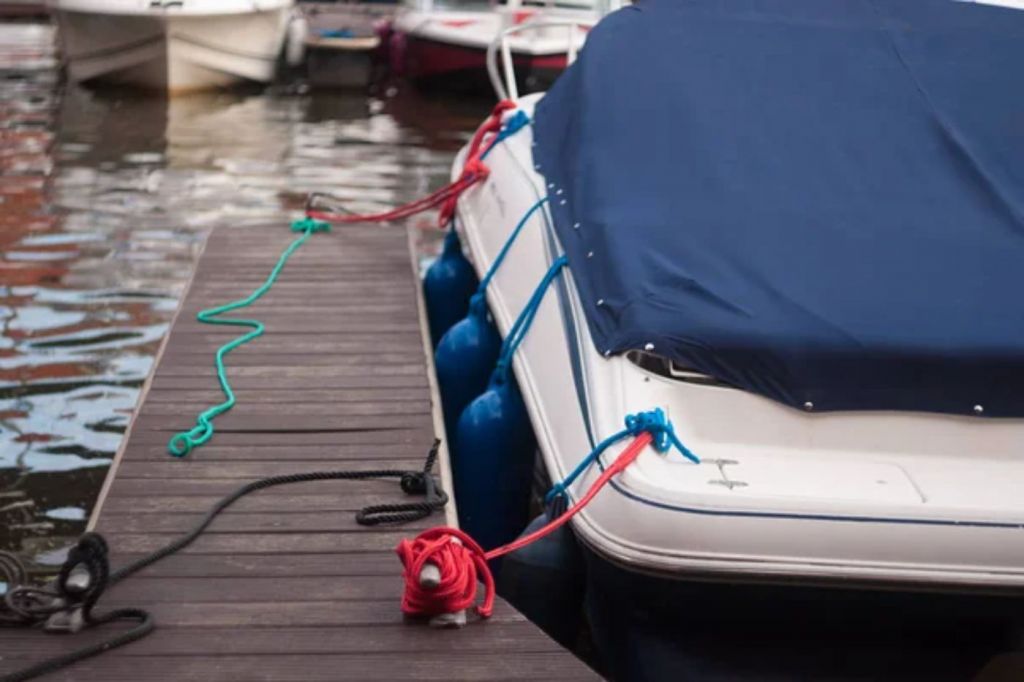
On this page:
Hack #1: choose the right cover, hack #2: clean and winterize boat, hack #3: secure your cover, hack #4: use moisture-absorbing products in your boat, hack #5: avoid sharp edges and protrusions on your boat, hack #6: use a boat cover support pole, hack #7: cover all openings, putting on a boat cover, best way to cover boat for winter.
A properly fitting cover will keep your boat clean and dry, preventing damage from rain, snow, and UV rays.

How To Make an Affordable DIY Winter Boat Cover
Measure your boat before buying a cover.
Measuring your boat ensures that you get a cover that fits your boat properly and provides adequate protection.
- Measure the length, width, and height of your boat, and be sure to take into account any accessories or equipment that may be on board.
- Once you have your measurements, you can start looking at different materials and styles of covers.
Tips to choose the right material and style
When choosing the style of cover, perhaps consider whether you want a custom-fit cover or a universal cover. Custom-fit covers are designed specifically for your boat and will provide the best protection, but they can be more expensive.
Universal covers are less expensive and easier to find, but they may not fit your boat as well. Here are some tips on how you can choose the right boat cover:
Consider the climate
If you live in an area with harsh weather conditions, such as extreme heat, cold, or precipitation, you may need a more durable and weather-resistant cover.
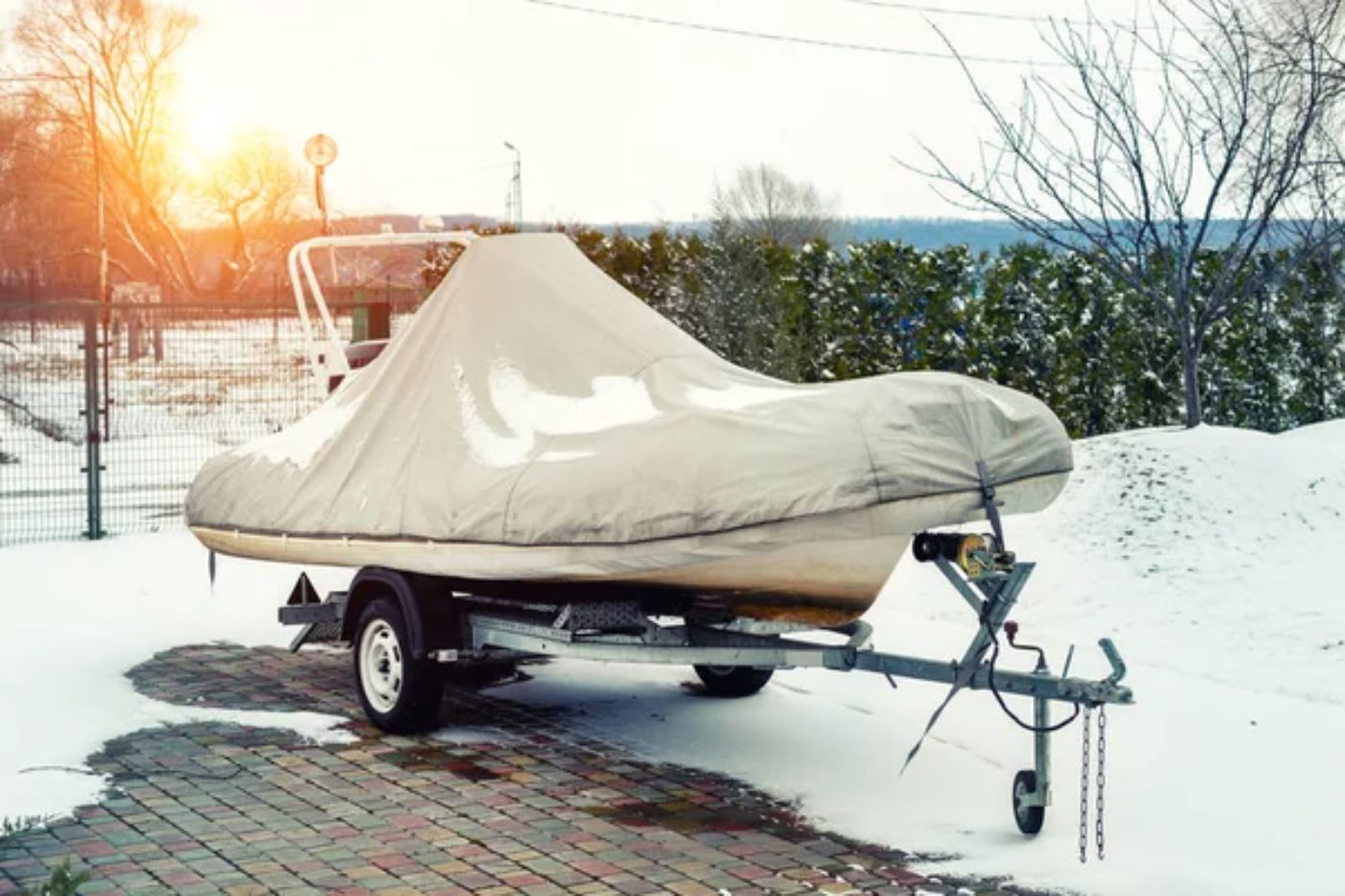
Look for breathable materials
A breathable cover will allow air to circulate, preventing moisture buildup and mold growth. This is especially important if you plan to store your boat for long periods of time.

What's the Best Material for Winter Boat Covers?
Choose a cover with reinforced seams.
The seams of your cover are vulnerable to wear and tear, so look for a cover with reinforced seams to ensure durability.
Consider the color
Lighter colors reflect sunlight and heat, while darker colors absorb them. If you live in a hot climate, a lighter-colored cover may be a better choice.
Think about the style of your boat
A pontoon boat will require a different style of cover than a fishing boat or a sailboat. Choose a cover that is designed to fit your boat's style and shape.

Look for a warranty
A warranty can give you peace of mind and protect your investment. Look for a cover with a warranty that covers defects and normal wear and tear.

Importance of cleaning and drying before covering
Cleaning and drying your boat before covering it helps to prevent the growth of mold, mildew, and other harmful organisms that can damage your boat's interior and exterior.
It also helps to prevent the accumulation of dirt, debris, and other contaminants that can cause corrosion and other types of damage to your boat's surfaces.
Tips to winterize your boat's system
Here are some tips for winterizing your boat's engine, fuel system, and other components:
Winterizing the engine
- Run the engine for a few minutes to warm it up. This will help to remove any moisture that may have accumulated in the engine oil.
- Once the engine is warm, change the oil and filter. This will help to remove any contaminants that may have accumulated in the oil.
- Add a fuel stabilizer to the fuel system to keep the fuel fresh during winter storage.
Winterizing the fuel system
- Start by filling the fuel tank with fresh fuel. This will help to prevent the buildup of condensation in the tank.
- Run the engine for a few minutes to circulate the stabilized fuel throughout the fuel system.
Winterizing other boat components
- To winterize other components of your boat, such as the water system, bilge pump, and electrical system, start by draining all water from the system. This will help to prevent the buildup of ice that can damage the system.
- Add antifreeze to the system to prevent any remaining water from freezing.
- Disconnect the battery and store it in a cool, dry place.
If you need a step-by-step guide on how to winterize a sailboat , here's an article you might find helpful.
Wind and snow can cause significant damage to your cover and the items it is meant to protect. Therefore, you might need to take measures to secure your cover and prevent it from being blown away or damaged. Some of these measures include the following:
Use tie-down straps
Tie-down straps are designed to hold your cover in place and prevent it from being lifted by strong winds. When using tie-down straps, you need to check if they are tight enough to keep the cover in place but not so tight that they damage the cover or the items underneath.

Use bungee cords
Bungee cords are elastic and can be stretched to fit over the cover and hold it in place. Ensure that they are not too tight as they can damage the cover or the items underneath.
Other methods for securing your cover include using sandbags or weights to hold it in place. These methods are especially useful for covers that are placed on uneven surfaces or in areas with high winds.
During winter storage, moisture can cause significant damage to your boat. It can lead to the growth of mold and mildew, which can cause unpleasant odors and health problems. Moisture can also cause rust and corrosion on metal parts, damage to electrical systems, and rotting of wood.
To prevent this damage, it is essential to use moisture-absorbing products in your boat such as the following:
Try using desiccants
Desiccants are materials that absorb moisture from the air. They are often made of silica gel, which is a porous material that can hold a large amount of water.
Desiccants come in various forms, such as packets, bags, or canisters. You can place them in different areas of your boat, such as the cabin, storage compartments, and engine room. Make sure to follow the manufacturer's instructions for the recommended amount and placement of the desiccant.
Use dehumidifiers
There are two types of dehumidifiers: electric and non-electric. Electric dehumidifiers use a fan and compressor to remove moisture from the air. They are more expensive but are more effective in reducing humidity levels.
Non-electric dehumidifiers, such as moisture traps or buckets, work by absorbing moisture from the air and collecting it in a container. They are less expensive but require regular emptying.
Other products that can help reduce moisture buildup in your boat include ventilation systems, air dryers, and moisture meters:
- Ventilation systems can help circulate air and reduce humidity levels. Air dryers use heat to remove moisture from the air.
- Moisture meters can help you monitor the humidity levels in your boat and determine if additional measures are necessary.
Cover damage can occur due to various reasons, such as sharp edges or protrusions on your boat. In this section, we will discuss common causes of cover damage and provide tips for using padding or other methods to protect your cover from damage.
Common causes of cover damage
- Sharp edges : Sharp edges on your boat can cut through the cover material and cause damage. These edges can be found on various parts of your boat, such as the windshield, cleats, and rails.
- Protrusions : Protrusions on your boat, such as antennas or fishing rods, can poke through the cover and cause damage.
- Wind : Strong winds can cause the cover to flap against sharp edges or protrusions, causing damage.
Tips to protect your boat cover
Use padding.
You can use foam padding or old towels to cover sharp edges and protrusions. This will prevent the cover from coming into direct contact with these areas and reduce the risk of damage.
Use a cover support system
A cover support system can help prevent damage caused by wind. It will keep the cover taut and prevent it from flapping against sharp edges or protrusions.
Use a bow sock
A bow sock is a padded cover that fits over the bow of your boat. It will protect the cover from damage caused by the windshield, cleats, and other sharp edges.
Use a cover repair kit
If your cover does get damaged, you might want to repair it as soon as possible. A cover repair kit will allow you to patch small holes or tears in the cover before they become larger.
When a boat cover is not supported properly, it can sag in the middle, which can cause water to pool on top of the cover. This can lead to damage to the boat and the cover, as well as mold and mildew growth.

3 Cheap Ways to Make a DIY Frame for Your Boat Winter Cover
Here are some examples of how to use support poles to create a peak in the center of the cover:
Adjustable support poles can create a peak in the center of a boat cover
These poles can be adjusted to the desired height and can be used on boats of different sizes. They are typically made of aluminum or fiberglass and are lightweight and easy to install.
PVC pipe can be another option
To create one, cut the PVC pipe to the desired length and place one end on the boat’s frame and the other end on the cover. Secure the pipe in place with duct tape or bungee cords.
You can use wooden dowels too
Wooden dowels can also be used to create a peak in the center of a boat cover. Cut the dowels to the desired length and place them on the boat’s frame. Then, drape the cover over the dowels and secure it in place with tie-down straps.
This hack makes sure that all openings on the boat are covered to prevent water from getting inside the boat and causing damage.
Boat openings that should be covered
Here are some examples of the types of openings that should be covered:
Engine : Make sure the engine is covered with a waterproof cover to prevent water from getting inside and causing damage.
Vents : Vents are a part of a boat's ventilation system, but they can also allow water to get inside the boat. Make sure all vents are covered with a vent cover to prevent water from getting inside.
Windows : Keep all windows closed and covered with a window cover to prevent water from getting inside.
Hatches : Hatches are openings on the deck or cabin of a boat that provides access to the inside of the boat. They are typically designed to be watertight, but they can still allow water to seep in if they are not properly covered. To prevent water from getting inside the boat through the hatches, make sure that all hatches are closed and securely fastened.
Ports : Ports are typically located on the sides of the boat and provide light and ventilation to the interior. To prevent water from getting inside, it is recommended to cover the ports with a port cover.
Putting on a boat cover can be a bit tricky, but with a little practice and patience, it can be done easily. Here are some steps you can follow to put on a boat cover:
Clean the boat
Before putting on the cover, make sure that your boat is clean and dry. This will help prevent dirt and debris from getting trapped under the cover and causing damage to your boat.
Unfold the cover
Carefully unfold the cover and lay it out on a clean, flat surface. Make sure that the cover is facing the right way up and that any zippers or other openings are in the right position.
Position the cover
Position the cover over the boat, making sure that it is centered and that it covers the entire boat. If you have a helper, you can ask them to hold one end of the cover while you position the other end.
Secure the cover
Once the cover is in position, start securing it to the boat. Begin by securing the cover around the bow and stern of the boat, using any straps or ropes that are provided with the cover. Then, work your way around the sides of the boat, securing the cover in place as you go.
Adjust the cover
Once the cover is in place, make any necessary adjustments to ensure that it is snug and secure. You may need to tighten straps or ropes or adjust the position of the cover slightly to ensure that it fits properly.
Check for gaps
Finally, check the cover for any gaps or areas where it is not fitting properly. If you find any gaps, try to adjust the cover or add extra straps or ropes to ensure that it is secure and snug.
Step-by-step guide on how to properly cover your boat
Create a support system.
Use PVC pipes and fittings to create a frame over your boat. This frame should create a peak in the middle of the boat to prevent water and snow from collecting on the cover.
Cover the boat with a tarp
Once the frame is in place, cover the boat with a tarp. Make sure the tarp is large enough to cover the entire boat and reach the ground on all sides.
Secure the tarp to the frame
Use bungee cords to secure the tarp to the frame. See if the tarp is tight and secure, without any low spots where water or snow can collect.
Add vents to the cover
To ensure proper ventilation, add vents to the tarp. These vents can be purchased or made by cutting small holes in the tarp and covering them with mesh.
Apply shrink wrap
Once the tarp is in place, apply shrink wrap over the top of the tarp. Make sure the shrink wrap is large enough to cover the entire boat and reach the ground on all sides.
Shrink the wrap
Use a heat gun to shrink the wrap to fit tightly over the boat. Start at the top of the boat and work your way down, making sure to apply heat evenly and avoid using too much heat in one area.
Pad sharp points or edges
Before applying the shrink wrap, see to it that you have padded any sharp points or edges on the boat to prevent them from puncturing the shrink wrap.
How to cover a sailboat for winter
Covering a sailboat for winter may differ from covering other types of boats like motorboats or fishing boats. Sailboats typically have a different shape and structure than motorboats, which can affect the way they are covered for winter.
Sailboats may have a taller mast or rigging that needs to be taken into account when covering the boat. The cover may need to be designed to accommodate these features and provide enough clearance to avoid damage.
Additionally, they may have more delicate equipment such as sails, lines, and electronics that need to be removed and stored separately to prevent damage during the winter.
This can be a more time-consuming process than covering a motorboat, which may only require removing the engine and other mechanical parts.
Best way to tarp a boat for winter

Tarping boat for winter storage
The best way to tarp a boat for winter depends on several factors, including the size and shape of your boat, the climate in your area, and the type of tarp you use.
If you have a small boat, a single tarp may be sufficient to cover the entire boat. However, if you have a larger boat, you may need to use multiple tarps to cover the entire vessel adequately.
If you live in an area with heavy snowfall, you may need to use a tarp with a steeper pitch to prevent snow from accumulating on top of the tarp.
Additionally, you may need to use additional supports, such as poles or ropes, to prevent the tarp from collapsing under the weight of the snow. You should also use a tarp that is specifically designed for outdoor use and can withstand the harsh winter elements.
Perhaps you might want to consider using a tarp with UV protection to prevent the sun's rays from damaging the boat's paint or upholstery.
See more of the benefits and drawbacks of using a tarp as a boat cover in this article.
Leave a comment
You may also like, pros and cons of shrink wrapping a boat - worth it.
Winter is coming. If you live somewhere temperate, the odds are good you'll get snow, ice and freezing rain during the long, dark non-sailing season. If your boat …
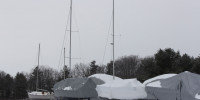
The Average Cost to Shrink Wrap a Boat (per foot)

Do I Need to Winterize an Indoor Stored Boat?

How to Winterize Your Sailboat Cheaper & Quicker

How Long Does it Take to Winterize a Boat on Average?
Own your first boat within a year on any budget.
A sailboat doesn't have to be expensive if you know what you're doing. If you want to learn how to make your sailing dream reality within a year, leave your email and I'll send you free updates . I don't like spam - I will only send helpful content.
Ready to Own Your First Boat?
Just tell us the best email address to send your tips to:

How to Make a Snap on Boat Cover
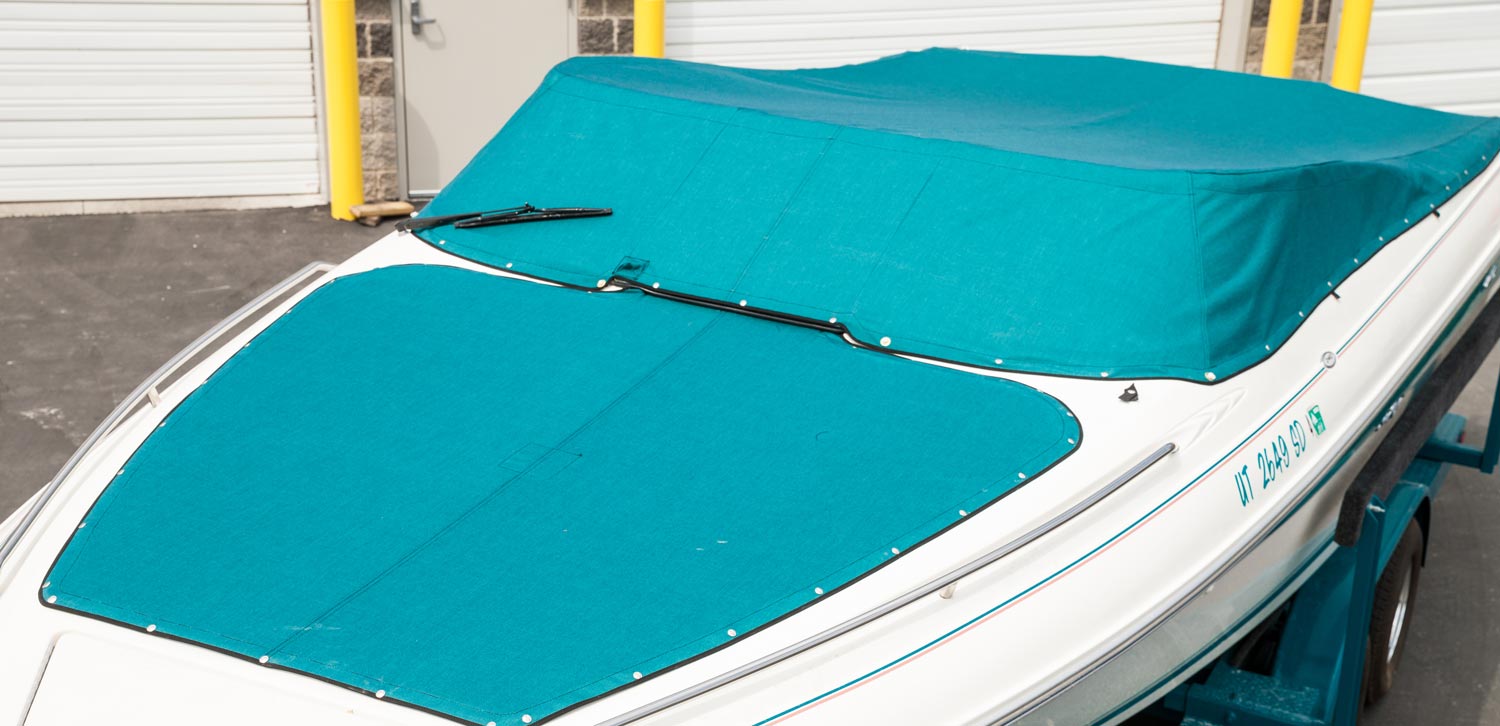
To make a snap on boat cover, first measure the width and length of your boat. Cut a piece of fabric that is twice the width and length of your boat. Fold the fabric in half, wrong sides together, and sew around the perimeter, leaving a 3-4 inch opening. Turn the cover right side out and press flat. Top stitch around the entire perimeter to finish. To install the snaps, mark where you want them to go along the edge of the cover. Install snaps according to manufacturer’s instructions.
- Choose the right size and shape of cover for your boat
- Cut out a piece of fabric that is slightly larger than the dimensions of your boat
- Hem the edges of the fabric to prevent fraying
- Sew snaps onto the hemmed edge of the fabric, making sure that they are evenly spaced out
- Place the cover over your boat and secure it in place by attaching the snaps to corresponding snaps on the boat itself
Upholstery "How to Install Snaps on a Boat Cover"
How Much Does a Custom Snap on Boat Cover Cost?
A custom snap on boat cover can cost anywhere from $250 to $600, depending on the size and style of the boat, as well as the quality of the materials used. For a small boat, such as a 16-foot open-bow runabout, you can expect to pay around $250 for a basic cover with no frills. A larger boat, like a 26-foot cabin cruiser, will likely cost closer to $600 for a fully customized cover with all the bells and whistles. Ultimately, the price of your custom snap on boat cover will come down to what you need and want in terms of function and aesthetics.
Can You Add a Snap on Cover to a Boat?
A snap-on cover for a boat can be an effective way to protect your investment and keep your boat looking good. Many companies make covers specifically designed to fit certain models of boats, so it is important to do some research to find the right one. In general, installing a snap-on cover is not difficult, but there are a few things you will need to know before getting started. The first step is to measure the length and width of your boat. This will ensure that you purchase a cover that is the correct size. You will also need to take into account any additional features on your boat such as fishing rod holders or swim platforms. Once you have the measurements, you can start shopping around for a cover. There are two main types of snap-on covers: those with sewn-in straps and those without. Covers with sewn-in straps typically provide a more snug fit and are less likely to blow off in windy conditions. However, they can be more difficult to install. Covers without sewn-in straps are easier to install but may not fit as snugly. Once you have selected a cover, the next step is to install it. If you are using a cover with sewn-in straps, begin by threading the strap through the eyelets on the side of the boat (if applicable). Then, pull the cover over the entire boat and secure it at the front by tying the straps together or attaching them with Velcro strips. For covers without sewn-in straps, simply pull them over the boat and secure them at both ends with ties or Velcro strips. Installing a snap-on cover can help prolong the life of your boat and keep it looking its best.
Are Snap on Boat Covers Good?
There are a variety of boat covers on the market, each with their own set of pros and cons. So, are snap on boat covers good? Let’s take a look at the features of snap on boat covers to see if they’re a good fit for you and your vessel. One of the main benefits of snap on boat covers is that they’re easy to put on and take off. This is thanks to the snaps that run along the edge of the cover, which attach to the corresponding loops or grommets on your boat. This convenience means that you can quickly cover up your boat when bad weather is forecasted or when you’re not using it, without having to fiddle with straps or ties. Another advantage of snap on boat covers is that they provide a snug, tight fit. This ensures that your cover won’t blow off in strong winds or come loose and flap around while you’re driving down the highway. A tight fit also helps to keep out unwanted critters like birds and squirrels who might try to nest in yourboat during storage. Snap on boat covers are made from durable materials like polyester or vinyl, which can stand up to UV rays, mildew, and moisture. These materials will also help protect your boat’s paint job from fading in sunlight. And because snap on covers typically have sewn-in elastic cords around the edges, they can stretch slightly to accommodate boats of different sizes. So, are snap on boat covers good? If you’re looking for an easy-to-use cover that will give your boat a snug, secure fit, thensnap onboat covers may be just what you need!
What are the Snap on Boat Covers Called?
If you’re in the market for a new boat cover, you may be wondering what all the different types are and what they’re called. Snap-on boat covers are one type of cover that’s available, and they can be a great option for easy on and easy off coverage. Here’s a closer look at snap-on boat covers and what sets them apart from other types of covers. Snap-on boat covers get their name from the way they attach to your boat. Rather than tie-downs or straps, snap-on covers use snaps that attach around the perimeter of your boat. This makes them quick and easy to put on and take off, which is ideal if you need to cover your boat frequently or in a hurry. Snap-on covers also tend to be more affordable than some other types of covers, making them a great budget-friendly option. And because they don’t require any straps or tie-downs, they’re also typically very easy to store when not in use. One downside of snap-on boat covers is that they don’t always fit as snugly as some other types of covers. This can allow wind and rain to get underneath the cover, so it’s important to choose a well-made cover that fits your boat properly. Snap-on covers also aren’t typically as heavy duty as some other types of covers, so they may not provide as much protection in severe weather conditions. Overall, snap-on boat covers are a convenient and affordable option for covering your boat. They’re quick and easy to put on and take off, which is ideal for busy boaters who need frequent coverage.

Credit: www.youtube.com
How to Make a Boat Cover from a Tarp
Making a boat cover from a tarp is a relatively easy process that can be done in an afternoon. The most important thing to keep in mind when making a boat cover from a tarp is to make sure that the tarp is large enough to cover the entire boat. A standard size tarp should be able to cover most boats , but if you have a larger boat, you may need to buy a bigger tarp. Once you have your tarp, lay it out on the ground and place your boat on top of it. Make sure that the center of the boat is in the middle of the tarp so that there is enough material on either side to wrap around and secure the cover. Once you have positioned the boat, use a measuring tape to determine how much material you will need to cut off of each side of the tarp. Cut equal amounts off of each side so that when you fold over the edges, they will meet in the middle and form a seam. To sew the seams together, use heavy-duty thread and needle or a sewing machine set for heavy fabrics. Start by folding one edge of the tarps over so that it covers half of the other side and pinning it in place. Then, sew along this folded edge using either method mentioned above. Repeat this step with the other side of the tarps until both sides are sewn together, forming a complete seam around all four sides of your now rectangular shaped piece of fabric/tarp. The last step is securing your new homemade boat cover onto your vessel! To do this, simply drape it over top of yourboat ensuring that all areas are coveredand then tie or clip it down at key points underneath (typically alongthe gunwales). Andthat’s it—you’ve now got yourselfa custom-fit waterproofcover for your belovedboat!
Boat Cover Templates
If you’re looking for a boat cover template, you’ve come to the right place. Here at Cover-template.com, we have a wide selection of templates to choose from. Whether you need a pontoon boat cover template or a fishing boat cover template, we have what you’re looking for. Our templates are easy to use and can be customized to fit your specific needs. Simply download the template that you need, print it out, and then follow the instructions on how to cut and sew your new boat cover. We also offer video tutorials on our website if you need any additional help. So what are you waiting for? Get started today and find the perfect boat cover template for your next project!
How to Make a Boat Cockpit Cover
If you have a boat, you know how important it is to keep the cockpit area clean and dry. But sometimes, when the weather is bad or you’re just not using your boat, it’s impossible to keep the cockpit area completely dry. That’s where a boat cockpit cover comes in handy. A boat cockpit cover is a great way to keep your boat clean and protect it from the elements when you’re not using it. There are a few things to consider when choosing a boat cockpit cover. First, you need to make sure that the cover fits snugly around your cockpit so that no water or debris can get in. Second, you need to choose a material that will stand up to the elements and won’t rip or tear easily. And finally, you need to decide whether you want a solid cover or one with mesh panels for ventilation. Once you’ve decided on the type of cover you want, making your own is actually quite easy. You’ll just need some heavy-duty vinyl fabric, some Velcro strips, and a sewing machine (or a needle and thread if you’re feeling old-fashioned). Start by measuring the circumference of your cockpit opening and adding an extra foot or so for overlap. Cut your fabric to size and then sew two parallel seams down the length of the fabric – these will be your “piping” seams. Next, hem all four sides of the fabric rectangle. To finish off your piping seams, fold each one over twice so that there’s about an inch of fabric on either side of the seam and sew it closed. Now lay your piping seam flat against one long edge of your vinyl rectangle – this will be the top edge of your finished cover. Pin in place and then sew along this edge with a zigzag stitch (this will help prevent fraying). Once again Hem all four sides of vinyl rectangle .
Assuming you would like a summary of the blog post and not the comments: A snap on boat cover can be easily made following these steps. First, purchase a heavy-duty tarp that is slightly larger than the boat. Then, gather some 2x4s and cut them to size so they fit snugly around the perimeter of the boat. Nail or screw the 2x4s into place around the edge of the boat. Make sure that they are evenly spaced so that the tarp will lay flat when it is attached. Next, use a measuring tape to measure and mark where you will need to put grommets along the edge of the tarp. Install grommets at each mark using a grommet installation tool. Once all of the grommets are in place, lay out the tarp over top of the boat and attach it to each grommet using snaps or hooks. Be sure to pull the tarp tight so that there are no wrinkles or sagging areas.
Leave a Reply Cancel reply
Sailboat Winch Covers. I Made It at TechShop

Introduction: Sailboat Winch Covers. I Made It at TechShop

This is an instructable that will show how to make covers for sailboat winches. These are really expensive if you have to go and buy them from a traditional canvas shop or generic ones from WestMarine. They will easily set you back $30-$50 each. They can be made with about $5 in materials. It's a handy skill to learn how to make boat canvas yourself if you own a boat as the going rate for marine work usually tends to be $100/hr up. It's very easy to save money doing it yourself. I will make these using the Industrial Straight Stitch Machine at TechShop Detroit. These can probably be made on a home sewing machine since you never have to sew through that many layers at once. http://www.techshop.ws I made it at TechShop.
Step 1: Measure Your Winches and Cut the Canvas.

The primary winches on my boat are 5.25" diameter and 7" tall. Take the diameter and add 1.5 inches to it. This gives us 6.75'. I went with an even 7" diameter circle of canvas. You use 1/2" margin on all around and you want some extra room for it to fit. That's the reason for adding 1.5" to the actual size when cutting out the canvas. For the sides of the winch cover. You take 7" and find the circumference which equals 22". Add a few inches to that so we will use 27". We want some extra distance going around. We need a to take the height of the winch which is 7" and add 2 inches to that. This is for 1/2" margin at the top and to fold it over twice at the bottom, 1/2" each fold. You need a rectangle that is 25" x 9". You need 2 pieces of 1" webbing 6" long. When you cut the webbing, it's a good idea to use a soldering iron and melt the ends so it doesn't fray. You will need about a foot and a half of 3/16" bungee cord. To make it so you have a flap to put on the winch with a rope loaded on it, you will need about 4 inches of velcro to sew in. I bought all my materials from Sailrite. www.sailrite.com. I am using Sunbrella Marine Canvas and V92 polyester thread.
Step 2: Load the Bobbin and Thread the Sewing Machine.

For this project I am using the Juki Industrial Straight Stitch machine at TechShop, Allen Park, MI. I tried to use the walking foot machine as it's a little easier to control, but the tension kept breaking the thread on the needle half. I moved on to the regular foot straight stitch machine instead. I am using a size 18, DBX1 needle for this project.
Step 3: Sew a Hem on the Bottom.

Sew a half inch hem along the bottom. It doesn't matter which side is which in this step. Sew a half inch hem along the long direction on one side.
Step 4: Sew Hems Along the Sides

Sew half inch hems along the 2 short sides. Make sure they are folded in the same direction as the bottom hem was.
Step 5: Sew the Top On.

Sew the top circle onto the body of the winch cover. Start at one edge. I find it easier to work with if I am feeding so that I am building the cylinder to the outside of the machine. As you are sewing this, the seems should be down. You want the clean side to be inside the cylinder as you are sewing so when you turn it right side out at the end, the hems are towards the inside. This step is very tricky, especially when using a sewing machine with a clutch. Working slow is essential and work around the circle. Try to sew roughly 1/2" in from the edge of the circle and keep the edge of the circle along the top edge of the side. Sew completely around the circle and stop. You should have several extra inches of side at this point. Cut off some of the extra side. Leave yourself an inch or so to sew another half inch hem. You are cutting off one of the side hems when you trim it. You want enough extra to overlap so you can velcro but not too much. When you sew the hem, pay close attention so that it's folded so that the clean edge is inside the cylinder.
Step 6: Make Some Holders for the Bungee.

Take the webbing strips and sew a loop in each one. This is so the bungee can go through the loop. Sew each strip to the seam along the circle. Sew them roughly 180 degrees apart along the circle.
Step 7: Sew on the Velcros Strips.

Turn the cover right side out. Work as much out of the top as you can. Sew a piece of velcro to the 2 edges. This allows the flap to be closed by the velcro with a rope passing through it. Make sure you use a loop and hook side to the velcro. It doesn't matter which side goes as long as you don't sew in 2 of the same.
Step 8: Add the Bungee

Take the bungee and pass it through the 2 webbing loops and tie the ends together. A sheet bend works good for the knot. It will stay and not slip out with the bungee. The goal of the bungee is that it will hold around the top flange of the boat winch. This way when you put the cover on, you slip the bungee around the top of the winch drum and it will hold it from blowing away.
Step 9: That's It.

That's it. It's finished now.
Recommendations

Big and Small Contest

Remake It - Autodesk Design & Make - Student Contest

For the Home Contest


IMAGES
VIDEO
COMMENTS
Measuring & Using Fabric Calculator - 1:35 min. Patterning Boat - 9:54 min. Cutting & Basting Fabric Panels - 25:30 min. Sewing Panels Together - 33:31 min. Cutting Fabric to Size - 45:12 min. Marking Pleats, Shrouds & Other Exiting Points - 52:20 min. Creating Skirt - 58:56 min.
http://www.boatcanvasuniversity.comHow to make boat canvas, This video shows how you can Make your own boat canvas. Boat covers, bimini upholstery, quilting,...
Protect your boat in the off season with a well-made boat cover that you can use over and over again. Our in-depth tutorial will show you every step of the p...
Cut the fabric: Use the measurements you took to cut the fabric for the winter boat cover. Use a sharp pair of scissors or a rotary cutter to ensure clean cuts. Sew the panels together: Sew the panels together using a sewing machine or by hand. Use a heavy-duty thread and a strong stitch to ensure durability.
Posted from Sailrite Archives from 2013 - How to Make a Winter Boat Cover DVDMATERIAL & TOOLS USED:Cover Fabric: https://www.sailrite.com/Fabrics/Marine-Fabr...
Nearly everything else on a boat is something the average handyman can tackle: bottom paint, varnish, minor fiberglass work, even basic engine maintenance. But I'd always been in awe of canvas makers because it seemed so, well, mystical. Since then, I've learned two things about making canvas covers and other things for my boat.
Sew a reinforcement under the middle of the cover. This will be used to hold the cover up using a halyard so that water will flow off of it and not puddle on the boat. Sew a small piece of webbing onto the top in this area to clip the halyard too. Sew a small piece of velcro to the strip going around the mast.
With a Sail Cover Kit from Sailrite®, it's never been easier to DIY your own, and our kits include all the materials you need, minus tools, to sew a sail cover. We provide detailed written instructions and a streaming online video that shows you the step-by-step construction process. Our kits come with the pattern pre-plotted, so all you ...
Remember that you're going to need some extra to stretch the cover around the sides of the boat. You also need room for ties to keep it tightly fit. Cut your panels to fit across the widest segments of the boat. Stitch Your Panels: Overlap the fabric panels so they have about a 5/8 of an inch seam.
Know the dimensions of your boat. La making a boat cover begins with the measurement of the sailboat. To do this, measure the stern at its highest point. Then you have to go to the windshield and measure the width and height of its crest to the friction rail. Next, measure the widest part of the arch and include the height of the friction rail ...
Make a Canvas Sailboat Cover - I Made It at TechShop: 7 Steps - Instructables. Making a DIY cover for a sailboat is among the more challenging types to attempt, but with the right plan, it's far from impossible. This tutorial takes you through how to do it in a clear and logical order, and it also provides you with plenty of photos for ...
Measure your boat to determine the size of the frame you need. Cut the aluminum pipes to the appropriate length using a tubing cutter. Drill holes in the pipes where you want to attach the cover. Join the pipes together to create the frame using screws. Attach the cover to the frame using clamps and bungee cords.
Sailrite Sail Cover Kits include a #10 YKK Vislon Zipper along the forward edge of the cover (along the mast). The Sunbrella Marine Grade fabric is fashioned...
Take the cover back inside and sew in any pleats, darts, or folds you pinned in. Fold the edge in and pin it in place to create a hem, then sew a double seam all the way around. Fit the cover over the boat and make adjustments as needed. You may want to add wide, heavy-duty elastic in some areas, such as around the bow and along the stern, to ...
If you already have a home sewing machine, it will probably work okay for up to several layers of canvas, depending on the thickness. Four yards of canvas was more than enough for me to make a 10′ mainsail cover and a new outboard engine cover with remnants left over for smaller projects. I ordered the canvas from SailRite along with the V-92 ...
Using Sunbrella, this PVC dinghy cover can be made for around $400. It's not the only material that will work, but it's one of the best. It can withstand UV damage and is also easy to clean. The main idea behind this project is to use a tarp as the base material and then apply Sunbrella over it using sewing techniques.
On this page: Hack #1: Choose the Right Cover. Hack #2: Clean and Winterize Boat. Hack #3: Secure Your Cover. Hack #4: Use Moisture-Absorbing Products in Your Boat. Hack #5: Avoid Sharp Edges and Protrusions on Your Boat. Hack #6: Use a Boat Cover Support Pole. Hack #7: Cover All Openings. Putting On a Boat Cover.
Cut a piece of fabric that is twice the width and length of your boat. Fold the fabric in half, wrong sides together, and sew around the perimeter, leaving a 3-4 inch opening. Turn the cover right side out and press flat. Top stitch around the entire perimeter to finish. To install the snaps, mark where you want them to go along the edge of the ...
http://www.sailrite.com/How-to-Make-a-Hatch-Cover-Video How to Make a Hatch Cover Video is a step-by-step video demonstration on how to make a drawstring hat...
Step 1: Measure Your Winches and Cut the Canvas. The primary winches on my boat are 5.25" diameter and 7" tall. Take the diameter and add 1.5 inches to it. This gives us 6.75'. I went with an even 7" diameter circle of canvas. You use 1/2" margin on all around and you want some extra room for it to fit.
How to Make a Power Boat Cover Video provides step-by-step instructions for sewing a custom cover for your power boat. Learn how to create your own great fit...
DIY Hatch covers for wooden model boat builders. Hatch openings are necessary for access to a boat's innards, and good fitting hatch covers are essential to ...